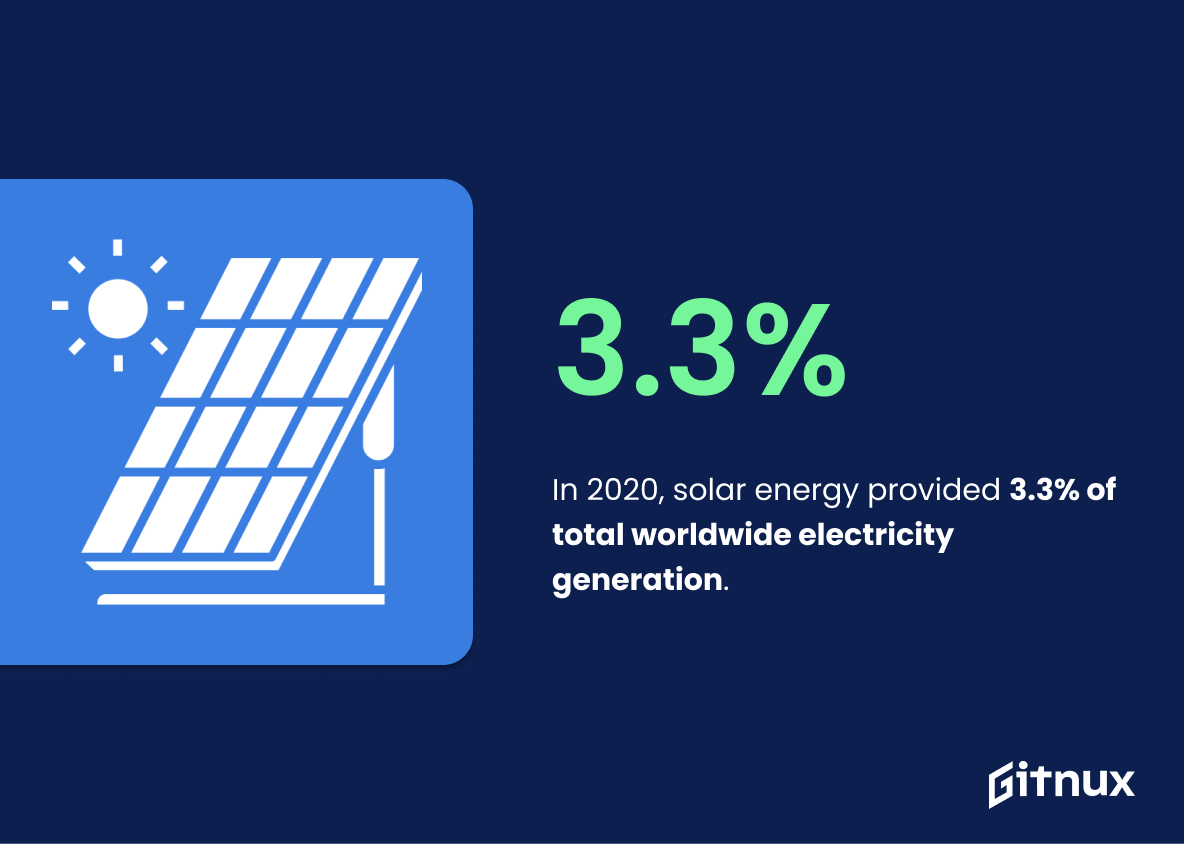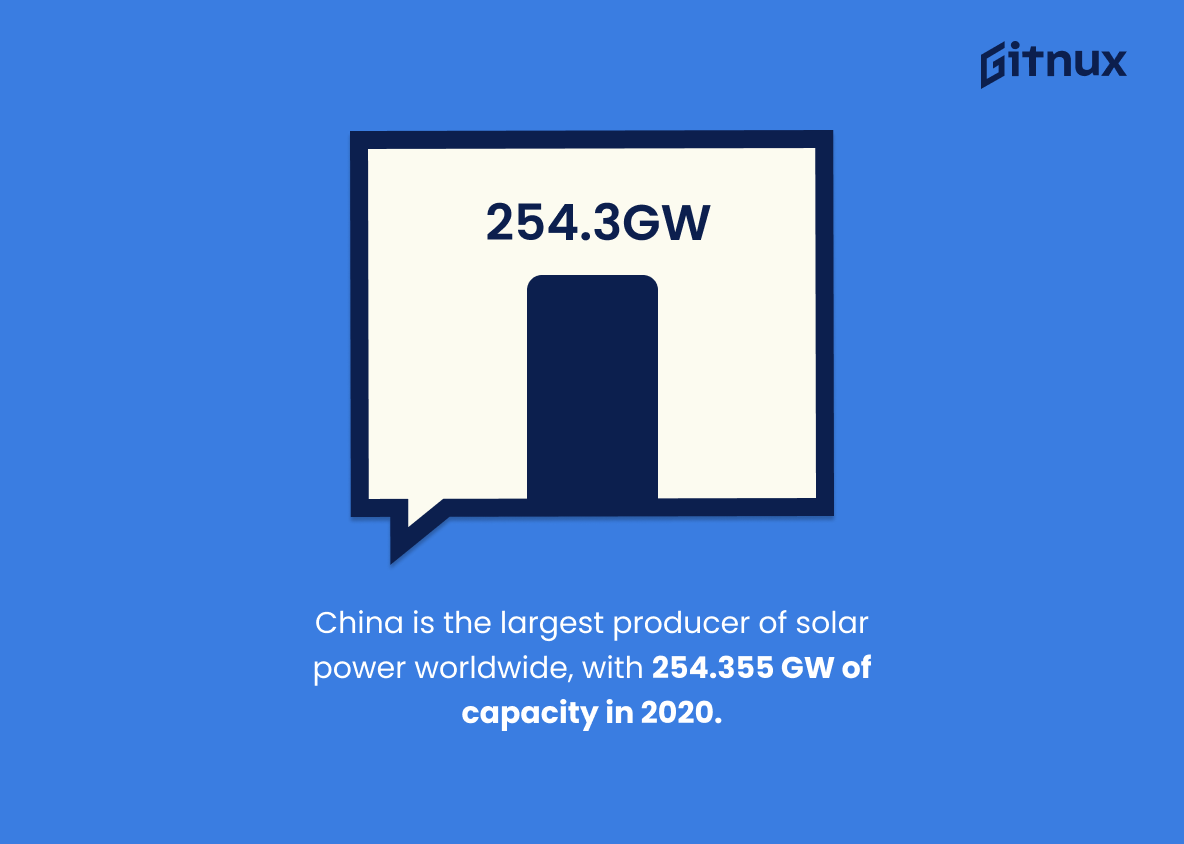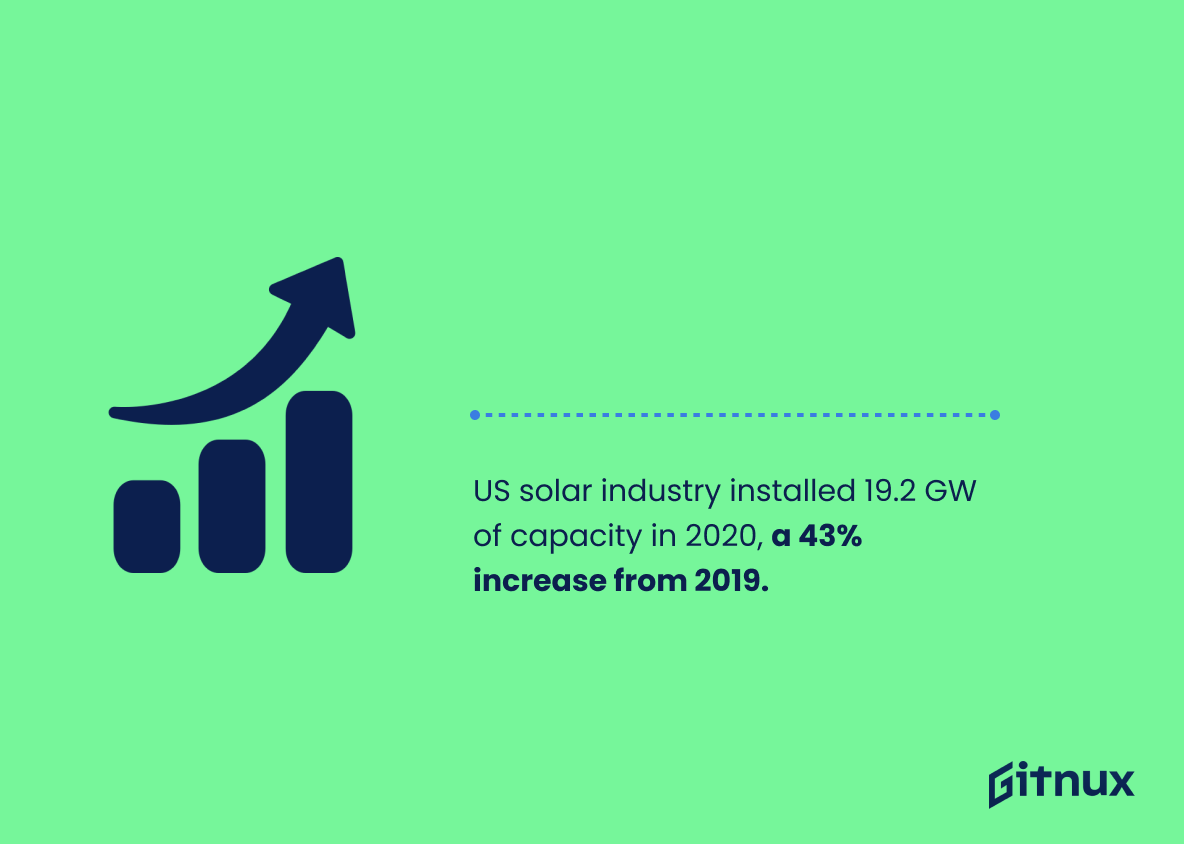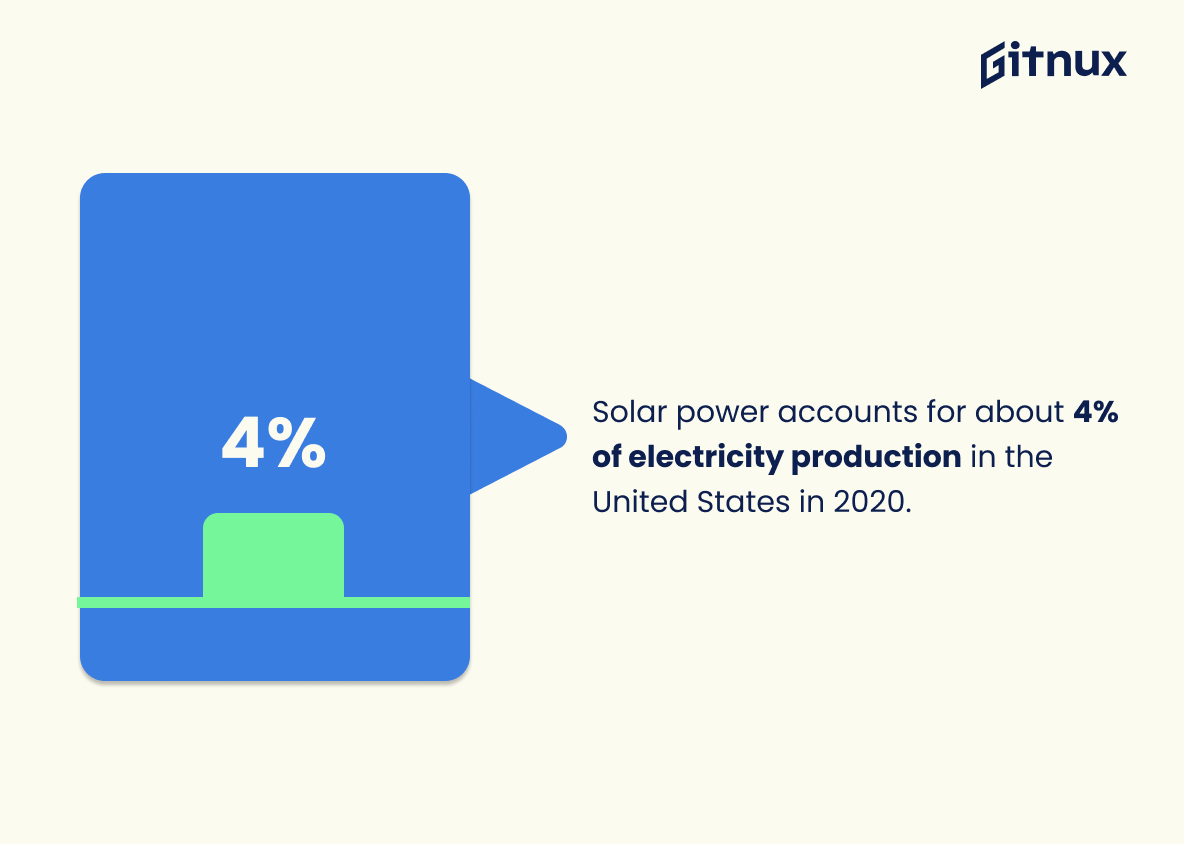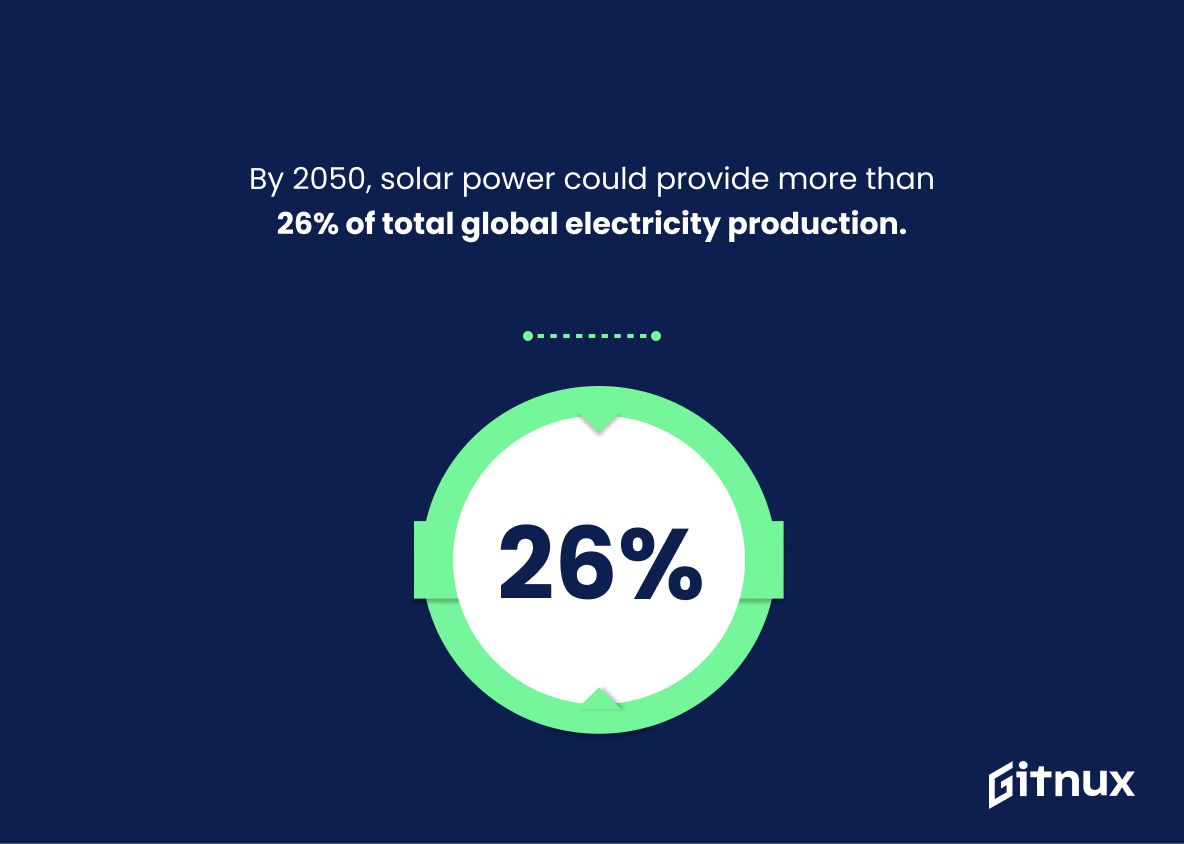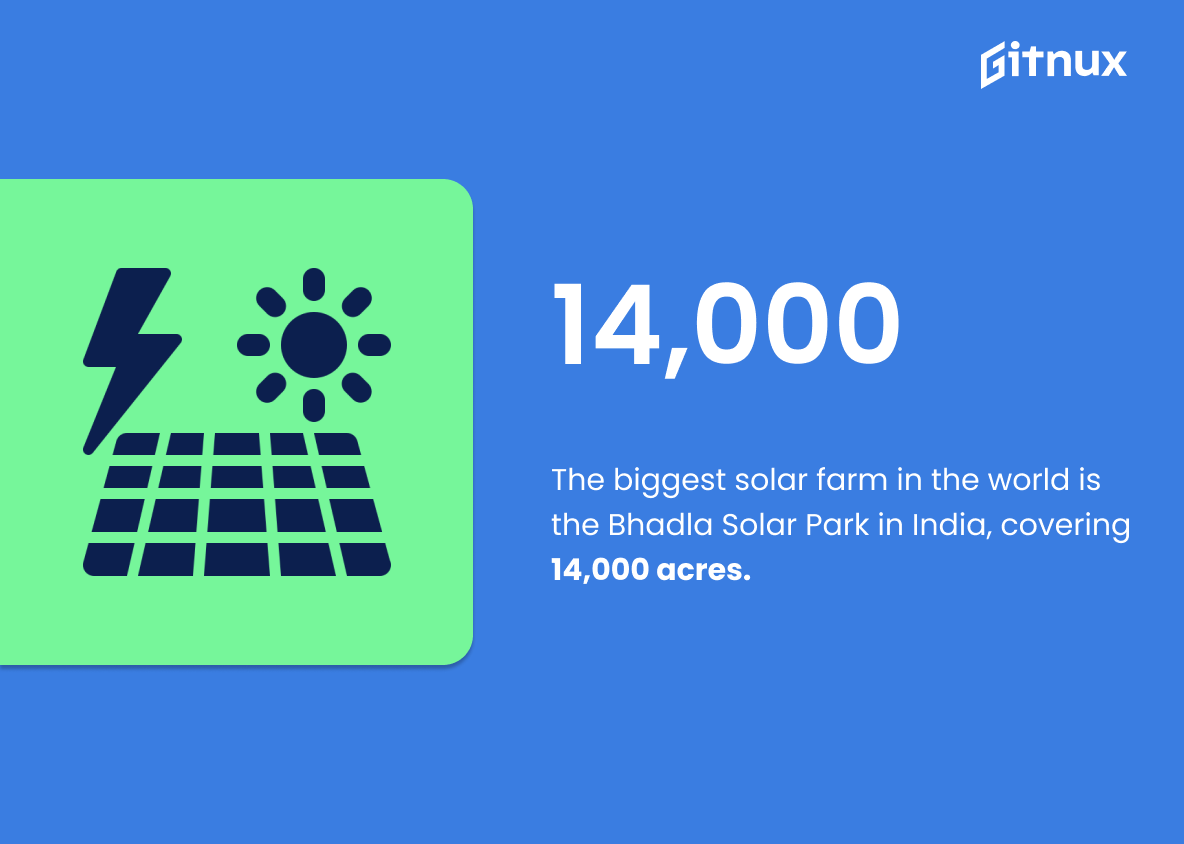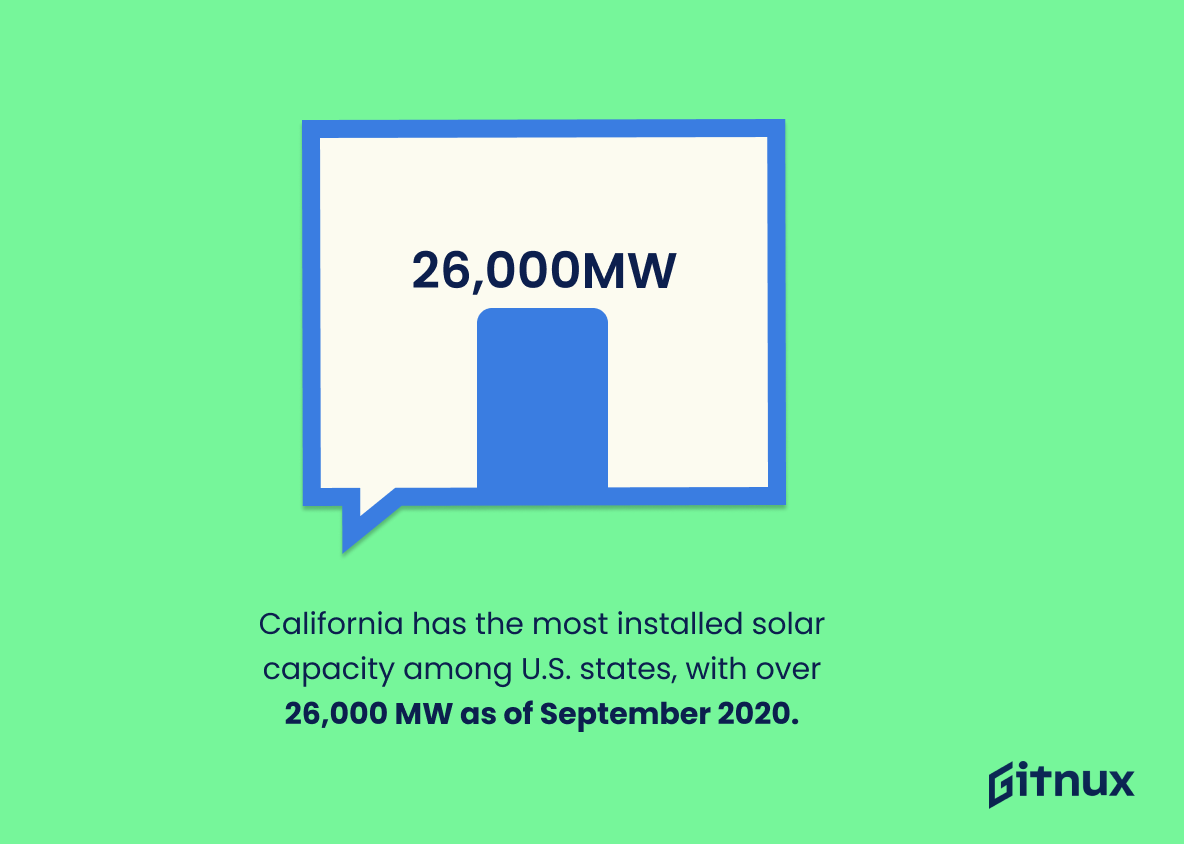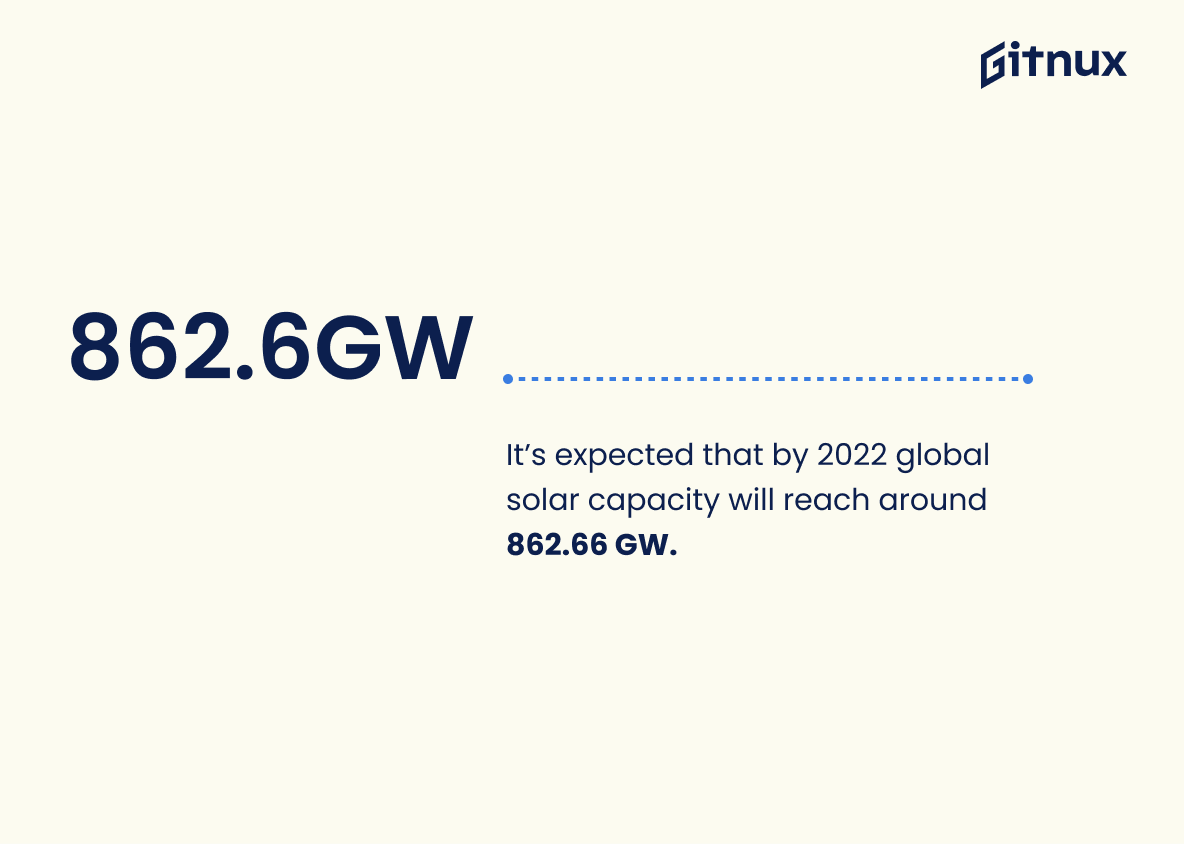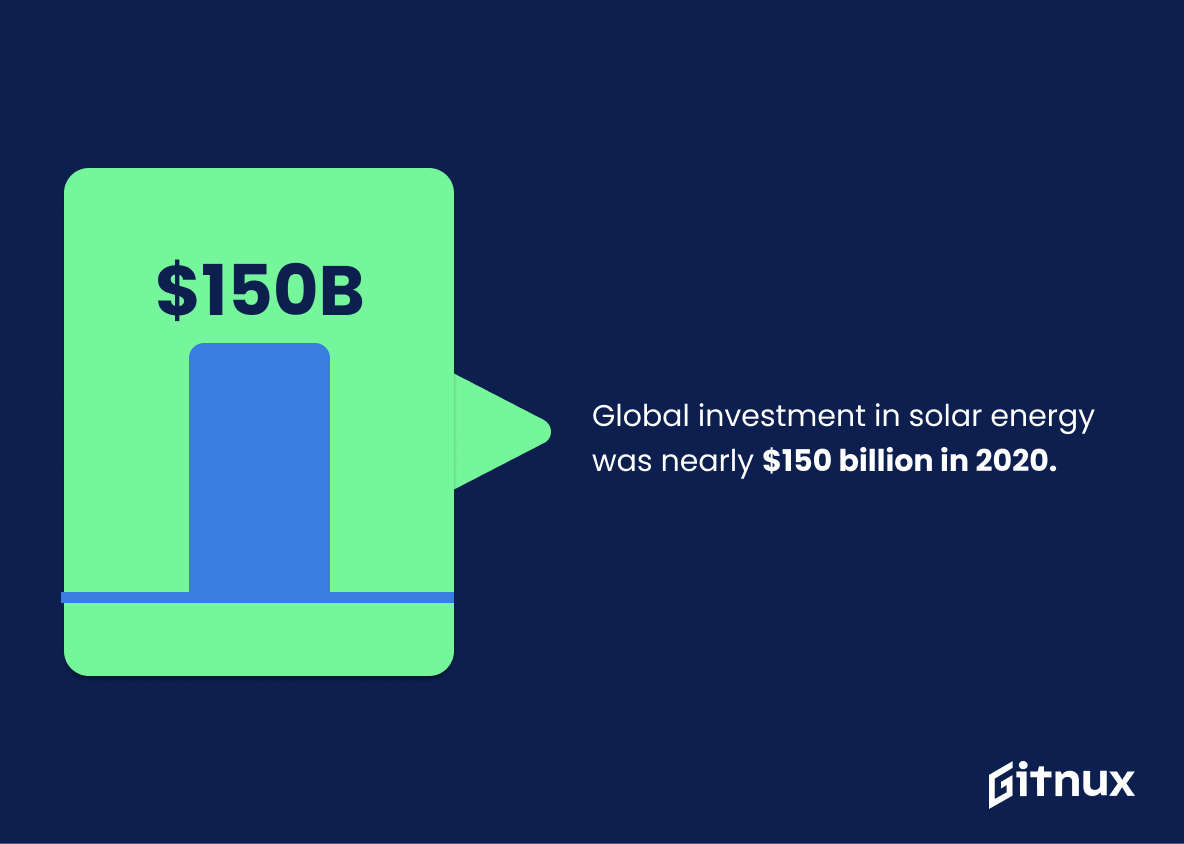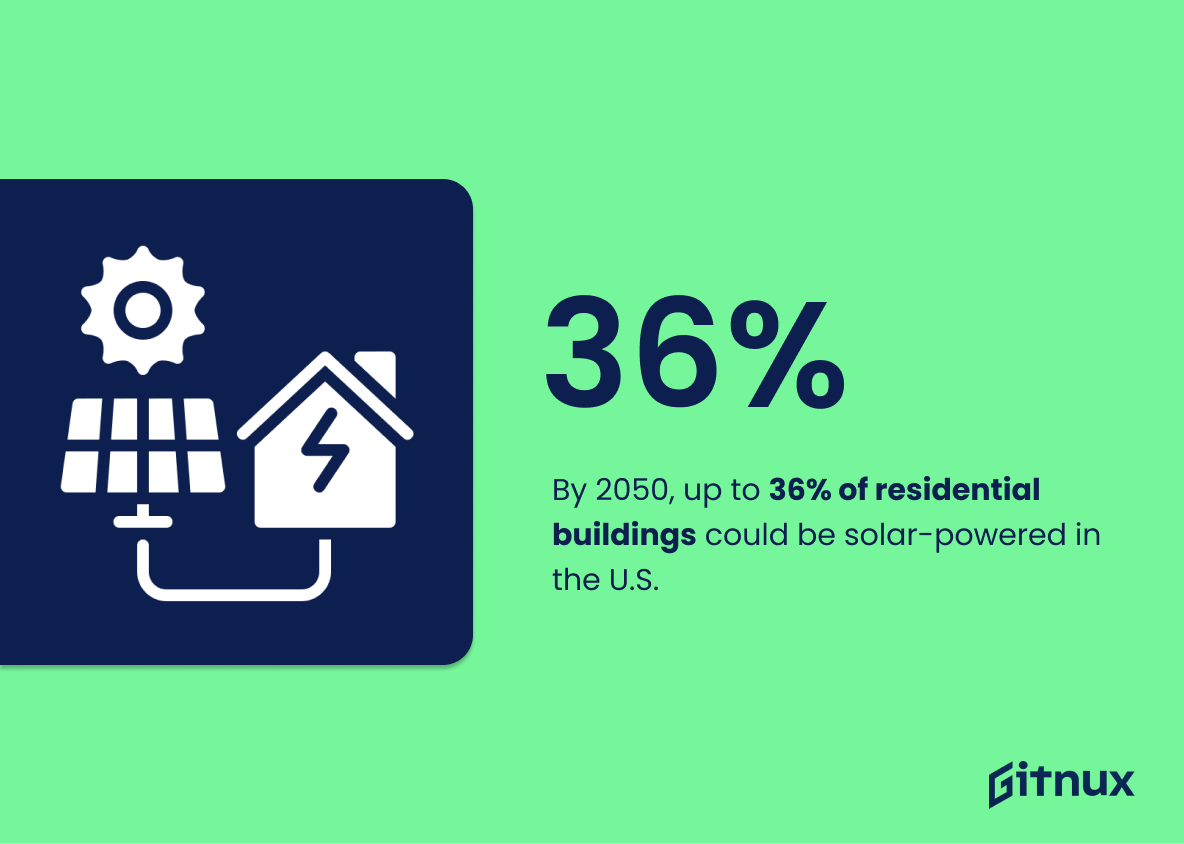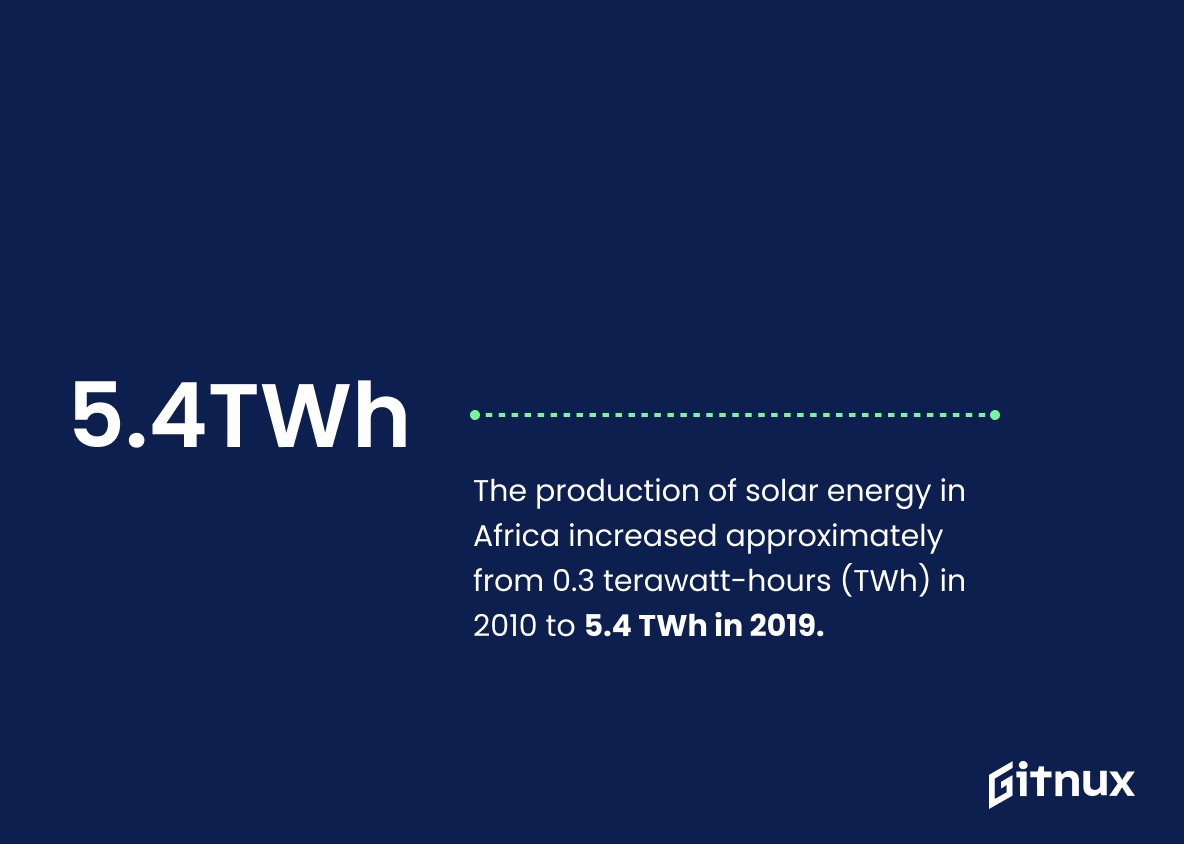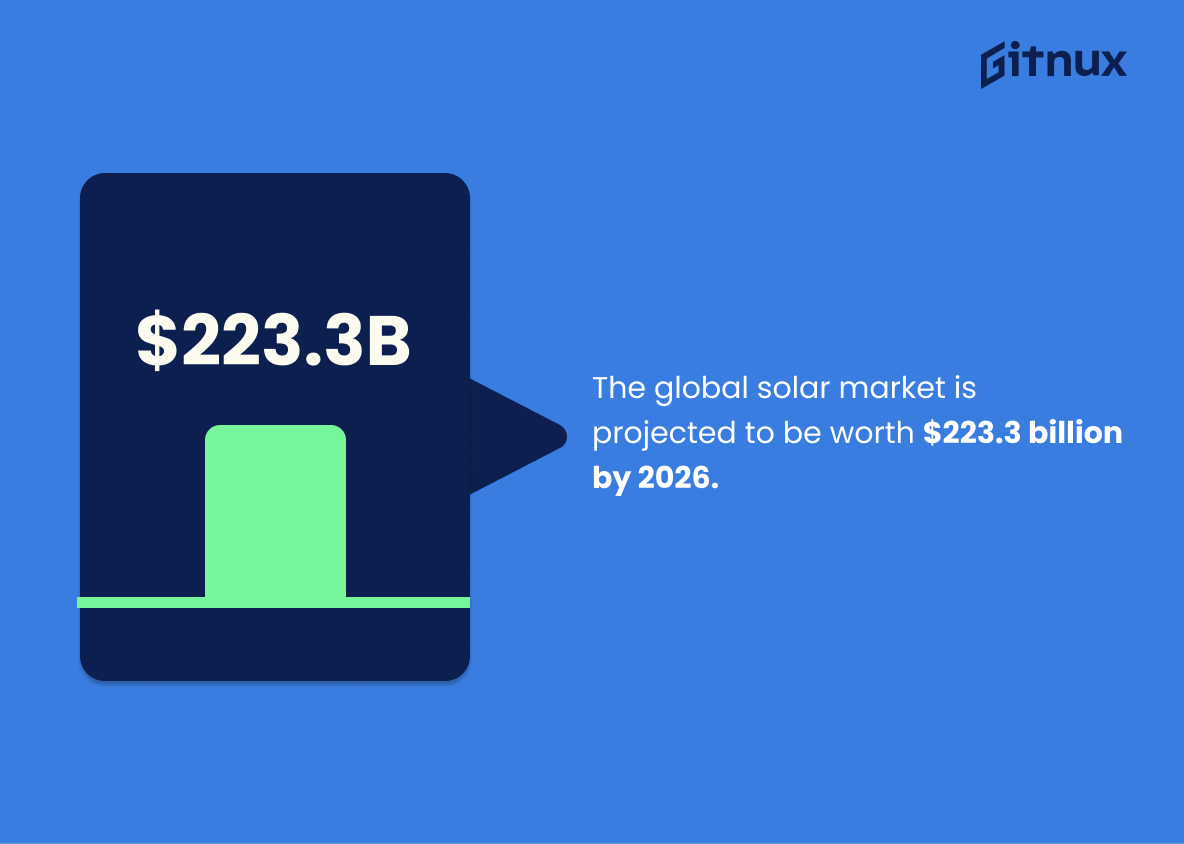Solar power, the cleanest and most abundant renewable energy source available, is rapidly becoming a core pillar in global sustainability efforts. Never has there been a more compelling time to delve into the impressive universe of solar power statistics. These figures unveil an optimistic narrative of continual growth and advancement in the sphere of renewable energy. From the increasing adoption of solar systems in homes across the globe to reaching record-breaking efficiencies in photovoltaic technology, this blog post will take you on a captivating journey through the illuminating world of solar power. Here, we unravel its current impact, future potential, and how it’s reshaping our energy landscape. So, let’s harness the power of the sun, one statistic at a time.
The Latest Solar Power Statistics Unveiled
In 2020, solar energy provided 3.3% of total worldwide electricity generation.
As we shed light on the world of Solar Power Statistics, one illuminating fact stands out. In 2020, solar energy carved out a niche for itself, accounting for 3.3% of total worldwide electricity generation. This fact is not merely a number or a percentage, but a reflective beacon showcasing the burgeoning acceptance of solar energy globally. Equally, it’s a yardstick against which we can measure growth, charting not only the past and present but potential future trends in this vital, sustainable technology.
China is the largest producer of solar power worldwide, with 254.355 GW of capacity in 2020.
Highlighting that China led the world in solar power production with a staggering 254.355 GW capacity in 2020 underlines its dominant role in the solar power landscape. In the vast universe of Solar Power Statistics, this figure shines bright like the North Star, guiding the global efforts towards this renewable energy source. It brings to the fore China’s commitment to green energy and emphasizes the scale at which solar power can be deployed successfully. Moreover, it offers a benchmark for other nations, stimulating them to catch up in this race towards sustainable energy generation. Just as importantly, this statistic sheds light on the potential for job creation, technological developments, and environmental benefits linked to solar power, fundamental themes intrinsic to any discussion around solar power statistics.
US solar industry installed 19.2 GW of capacity in 2020, a 43% increase from 2019.
Painting a fascinating portrait of growth and progress, the inclusion of the statistic, that the US solar industry expanded its capacity by 19.2 GW in 2020, amplifies by a significant 43% compared to the preceding year, seamlessly blends into the narrative of a blog post about Solar Power Statistics. This numerical affirmation triumphs in showcasing the accelerating adoption and technological advancements of solar energy, a clear illustration of the nation’s robust and dedicated move towards more sustainable and renewable solutions for power generation. Not only does it spotlight the successes of the past year, it also lays the groundwork for future predictions, lending credibility and offering intriguing insights into the potential expanse of the solar power industry’s horizon.
Solar power accounts for about 4% of electricity production in the United States in 2020.
Anchoring this insightful stat in our minds, we sail into the heart of the matter – Solar Power. A humble 4% portion of the USA’s total electricity generated in 2020 emerged from the effervescent dance of photons produced by the Sun, a celestial power plant. This vibrant solitary figure, simple yet profound, is a testament to solar power’s budding prominence in our energy mix, illuminating our journey towards a brighter, sustainable, and greener future. It whispers of the challenges still towering before us, while also celebrating the milestones that have been crossed. So, as we cruise through the meandering rivers of solar power statistics, let this 4% be your guiding Northern star, symbolizing both our triumphs and trials.
By 2050, solar power could provide more than 26% of total global electricity production.
As we stride towards a future that’s increasingly becoming cognizant of the pressing need for sustainable energy resources, this projection about solar power encompassing over one-fourth of the global electricity production by 2050 truly illuminates our context. It paints an audaciously optimistic outlook for solar power, dramatically underscoring its potential to not just rival, but power ahead of traditional energy avenues. Assuming the backdrop of your blog post about Solar Power Statistics, this projected horizon offers a compelling marriage of numbers and narrative. It not only bolsters the argument for solar power’s crucial role in meeting our globe’s burgeoning energy needs but also evokes a powerful visual of a future where clean, renewable energy drives a major chunk of our electricity grids. Undeniably, it reinforces the significance of solar power as a forceful contender in the energy transition race, marshaling readers to re-evaluate and respect the ‘power’ solar energy is truly capable of harnessing.
The biggest solar farm in the world is the Bhadla Solar Park in India, covering 14,000 acres.
The shimmering expanse of the Bhadla Solar Park in India, spread out over a staggering 14,000 acres, stands as an impressive testament to the potential of solar energy. This enormous solar farm, the largest in the world, serves as a monumental benchmark in our global shift towards renewable sources of energy. In the context of Solar Power Statistics, its scale not only speaks to the capacity of solar energy but also underscores the immense leap we’ve made in harnessing the power of the sun. Subtly illustrating the urgency of moving away from conventional, eco-taxing energy sources, the Bhadla Solar Park’s scope sets a tantalizing precedent for what ambitious solar projects can achieve.
California has the most installed solar capacity among U.S. states, with over 26,000 MW as of September 2020.
Showcasing California’s leading position in U.S. solar capacity, with a whopping 26,000 MW installed as of September 2020, paints a vivid picture of the state’s commitment to sustainability and green energy. This impressive figure shines a bright light on California’s innovative strides in the solar power sector, setting a high bar for other states to aspire to. In the arena of Solar Power Statistics, this particular number speaks volumes of the enormity and potential of solar energy incorporation in our daily lives. Visualizing this magnitude, one can truly grasp the pace at which solar energy is taking root in the United States, guiding the readers of our blog post through the illuminating journey of solar power progress.
It’s expected that by 2022 global solar capacity will reach around 862.66 GW.
The projection that global solar capacity will surge to approximately 862.66 GW by 2022 is an exciting beacon of hope in the adventurous voyage of renewable energy. It not only underscores the staggering growth potential of solar energy, it also paints a vivid picture of a future energized by cleaner and sustainable power. Within the context of a blog post about Solar Power Statistics, this particular data point serves as powerful evidence of solar power not being a fringe player, but an impending heavyweight champion in the global energy arena. It reaffirms the irresistible allure solar power holds for governments, businesses, and private households alike. Akin to a bright spot in the dawn of a sustainable era, this statistic is key to illuminating the discourse on renewable energy expeditions.
Global investment in solar energy was nearly $150 billion in 2020.
Highlighting the figure of nearly $150 billion invested globally in solar energy in 2020 underscores the burgeoning confidence of the global market in solar as a leading renewable energy source. It serves as a testament to the expanding influence and impact of solar power in our energy grids, further underscoring its potential as a long-term solution to our global energy needs. In the context of solar power statistics, this number not only offers a glimpse into the current state of the solar industry, but also portends the promising trajectory that this renewable energy is racing along.
Solar PV module prices have fallen by around 90% since the end of 2009.
In the radiant domain of solar power, statistics reveal a stunning light at the end of the tunnel – solar PV module prices plummeting by an astonishing 90% since the tail end of 2009. This solar power revolution, set into motion by a dramatic decrease in costs, opens a sunrise of opportunities. Consider its implications: an affordable gateway to renewable energy for more families and companies, and substantial acceleration towards global carbon neutrality. With a cost-efficient catalyst like this under the sunlight, the future of solar power might just have found its shining beacon.
By 2050, up to 36% of residential buildings could be solar-powered in the U.S.
Highlighting the projection that by 2050, up to 36% of U.S. residential buildings could be solar-powered, serves as a pulse-check in the constantly evolving heartbeat of solar power assimilation in the housing framework. It paints a captivating picture of the potential future, and embodies the ascent of this renewable energy form, shaping the discourse about environmental sustainability. This statistic is an underpinning stone in our narrative, allowing readers to gauge the anticipated pace at which solar technology could be penetrating the traditional housing market. It fuels the discussion about the pros and cons, the economic implications, policymakers’ role, and more. In essence, it is a beacon illuminating the possible future of solar power usage, instigating further exploration and understanding of this renewable energy resource.
In Australia, over 2.66 million rooftop solar power systems have been installed as of January 2021.
Holding a mirror up to this startling fact, one can appreciate the sunlight of enlightenment it casts on the progressive steps towards green energy in Australia. As we navigate the statistical universe of our blog post, this data point presents itself like a solar flare, illuminating how over 2.66 million rooftop solar power systems have found homes in Australia by January 2021. This, readers, isn’t just a numerical data – it’s a testament to the nation’s promising embrace to renewable energy, rendering it a crucial data point while discussing solar power statistics.
The production of solar energy in Africa increased approximately from 0.3 terawatt-hours (TWh) in 2010 to 5.4 TWh in 2019.
Diving headfirst into the rousing world of solar energy, we unearthed a diamond in the rough: a jaw-dropping surge in solar energy production in Africa, from a modest 0.3 terawatt-hours (TWh) in 2010, catapulting to a respectable 5.4 TWh in 2019. This colossal growth punctuates the narrative of Africa’s solar power journey, a dazzling testament to both their commitment and potential in the global renewable energy scene. Furthermore, this robust increment intensifies the dialogues around sustainable power sources and their feasibility, further fuelling the ardor of green energy proponents. Not merely numbers on a page, these figures beacon the dawn of an era brimming with sustainable possibilities.
The global solar market is projected to be worth $223.3 billion by 2026.
Emphasizing the forecasted worth of the global solar market to reach an astounding $223.3 billion by 2026 serves as an emblem of solar power’s meteoric rise in the world’s energy sector. On the backdrop of an escalating demand for renewable and eco-friendly energy resources, this projected figure paints a robust picture of the solar energy industry’s potential. It essentially sketches a future where solar power’s demand and utilization are not only mainstream but also economically significant – highlighting the vitality and financial feasibility of this renewable energy source in a blog post about Solar Power Statistics.
Conclusion
Solar power is rapidly becoming a dominant force in the energy sector, proving itself to be reliable, sustainable, and capable of contributing significantly to the world’s power demands. These solar power statistics clearly illuminate the bright future of this renewable energy source. The continued growth and technological advancements only underscore its potential to be a major part of a greener and more sustainable future. Our responsibility, as stewards of our planet, is to recognize and harness this immense potential, nudging people, communities, and nations towards greener energy alternatives as solar power. Indeed, the sun has yet to set on the potentials of solar power; rather, we are at the cusp of its dawn. Let’s bask in the light of this solar evolution, powering our world, one photovoltaic cell at a time.
References
0. – https://www.www.statista.com
1. – https://www.www.seia.org
2. – https://www.www.fortunebusinessinsights.com
3. – https://www.www.irena.org
4. – https://www.www.iea.org
5. – https://www.www.nrel.gov
6. – https://www.about.bnef.com
7. – https://www.www.cleanenergyregulator.gov.au
8. – https://www.interestingengineering.com
9. – https://www.www.eia.gov
